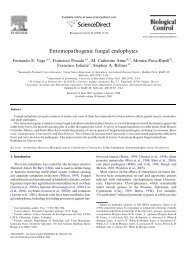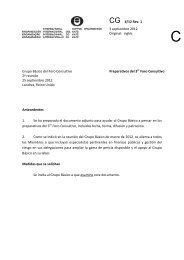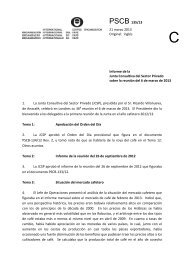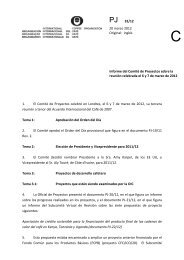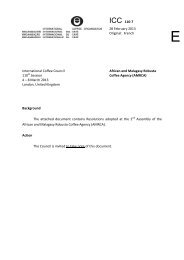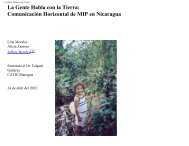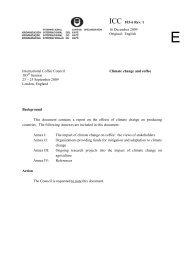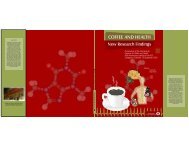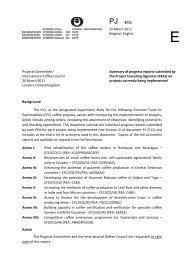Devouring profit - International Coffee Organization
Devouring profit - International Coffee Organization
Devouring profit - International Coffee Organization
You also want an ePaper? Increase the reach of your titles
YUMPU automatically turns print PDFs into web optimized ePapers that Google loves.
CBB is a complex pest because it can cause different types of loss. Normally coffee<br />
farmers are aware of one or maybe two, but in reality it can cause up to three types of<br />
loss. Duque (2000) made an assessment of the economic importance of this pest.<br />
4.1 Categories of losses<br />
caused by CBB<br />
Drop of immature berries: CBB may cause considerable shedding of young berries.<br />
In Colombia it has been observed that berries less that 90 days old can drop easily if<br />
they are attacked by CBB. Unfortunately we do not currently have measurements for<br />
this damage though a project by Cenicafé is under way to quantify this effect.<br />
Loss in weight: because of pest damage, the quantity of ripe cherries required to<br />
obtain a certain amount of parchment coffee can vary. For instance a normal proportion<br />
is 5:1, e.g. 5 kilograms of ripe picked cherries to make 1 kilogram of a tradable<br />
standard of parchment coffee, e.g. the Tipo Federación standard in Colombia. Farmers’<br />
comments informed that with high CBB attacks this proportion can rise from 5:1<br />
to 6, 7 or even 8:1, which translated in economic terms, means heavy losses. Saldarriaga<br />
(1994) observed that at high infestation levels, large amounts of ripe cherries were<br />
needed to get 1 kilogram of parchment coffee, e.g. for a coffee plot with no control<br />
carried out, she found for the period June to August 1992, that the relationship reached<br />
17:1. Likewise when visiting the project in Mexico, we interviewed a farmer (Mr.<br />
Estanislao) about coffee and CBB management. He told us that under normal conditions<br />
2 baskets of ripe coffee should yield 1 kg of parchment coffee but with CBB he<br />
now needed up to 3 coffee baskets to obtain 1 kg of parchment coffee. So the farmer<br />
had reasoned out that this loss was due to CBB attacks.<br />
In the above cases, the farmer understands the weight loss effect because he processes<br />
his coffee to the parchment stage (dried to 12% humidity) where he can confirm<br />
the quality of his coffee and probable causes of defects by simple visual inspection.<br />
The problem arises when farmers sell coffee cherries, where the true damage level<br />
may be much harder to determine. In this case the buyer, who often buys by volume,<br />
not weight, would most likely adopt a ‘worst case scenario’ and pay the farmer a low<br />
price that would include a tacit discount for the likely quality of the resulting parchment<br />
coffee.<br />
Loss in quality: in Colombia, the National Federation of <strong>Coffee</strong> Growers has defined<br />
standard rules to buy coffee from farmers. These rules aim to ensure that Colombian<br />
coffee meets a certain quality in order to attract a favourable international price. <strong>Coffee</strong><br />
that meets the established norms gets the full official price (Tipo Federación).<br />
A bean that has been the host of a developing brood of CBB is clearly defective and if<br />
present in roasted coffee will cause a decline in organoleptic (taste and aroma) quality.<br />
The authors do not know the threshold for detection although Montoya (1999), studying<br />
different types of damage in coffee, found that if the percentage of beans with<br />
43




